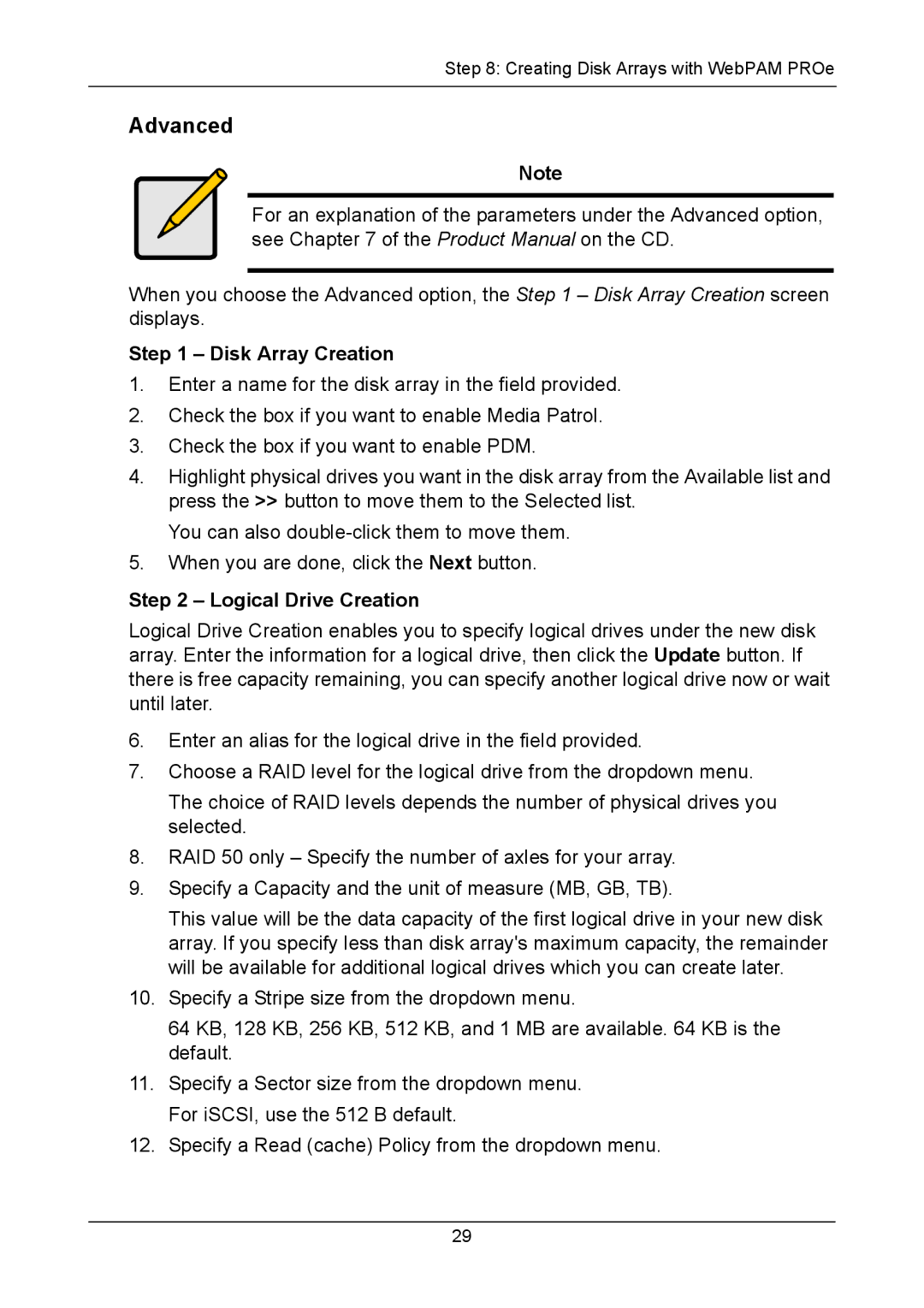
Step 8: Creating Disk Arrays with WebPAM PROe
Advanced
Note
For an explanation of the parameters under the Advanced option, see Chapter 7 of the Product Manual on the CD.
When you choose the Advanced option, the Step 1 – Disk Array Creation screen displays.
Step 1 – Disk Array Creation
1.Enter a name for the disk array in the field provided.
2.Check the box if you want to enable Media Patrol.
3.Check the box if you want to enable PDM.
4.Highlight physical drives you want in the disk array from the Available list and press the >> button to move them to the Selected list.
You can also
5.When you are done, click the Next button.
Step 2 – Logical Drive Creation
Logical Drive Creation enables you to specify logical drives under the new disk array. Enter the information for a logical drive, then click the Update button. If there is free capacity remaining, you can specify another logical drive now or wait until later.
6.Enter an alias for the logical drive in the field provided.
7.Choose a RAID level for the logical drive from the dropdown menu.
The choice of RAID levels depends the number of physical drives you selected.
8.RAID 50 only – Specify the number of axles for your array.
9.Specify a Capacity and the unit of measure (MB, GB, TB).
This value will be the data capacity of the first logical drive in your new disk array. If you specify less than disk array's maximum capacity, the remainder will be available for additional logical drives which you can create later.
10.Specify a Stripe size from the dropdown menu.
64 KB, 128 KB, 256 KB, 512 KB, and 1 MB are available. 64 KB is the default.
11.Specify a Sector size from the dropdown menu. For iSCSI, use the 512 B default.
12.Specify a Read (cache) Policy from the dropdown menu.
29
